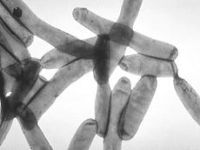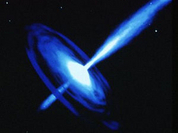Portugal: Third worst outbreak of Legionnaire's in history
The number of new reported cases in one of the world's worst outbreaks of Legionnaire's disease appears to be decreasing, as the noose tightens around the possible source of infection in the geographical location in an industrial area just north of Portugal's capital city, Lisbon.

So far there have been seven, possibly eight, deaths recorded in this outbreak of Legionnaire's disease, out of a total of 291 cases reported, of which 49 are interned in Intensive Care Units. 9 patients have been discharged. The outbreak has been centred in the Municipality of Vila Franca de Xira, just north of Portugal's capital city, Lisbon.
The majority of those infected reside in three locations, namely Póvoa de Santa Iria, Forte de Casa and Vialonga, all belonging to the Municipality of Vila France de Xira. Other cases registered in the North of Portugal (Oporto and Vila Real), the Centre West (Figueira da Foz), Centre East (Castelo Branco), and one case each in Angola and Peru, belong to patients who have connections with the area referred.
The cooling towers of three firms are currently under suspicion of being responsible for the outbreak and criminal investigations are taking place, as experts continue their checks, having found the Legionella bacterium in 15 per cent of the cooling towers they have analysed.
The first cases began to appear at the end of last week, but only around ten per cent of those affected show symptoms, meaning that the current outbreak will have affected around 3,000 people, at least. The disease attacks particularly men over the age of 50 and is especially dangerous for those with underlying health problems. For some unknown reason it does not affect children. Symptoms are a light fever, a headache, dry cough, abdominal and muscular pains, diarrea and pneumonia in more serious cases.
Legionnaire's Disease is not spread from person to person - it is contracted by directly inhaling water droplets or water vapour which has been contaminated by the Legionella bacterium. The current outbreak in Portugal is the third largest registered worldwide, after the 2001 outbreak in Spain (450 cases registered and 6 deaths) and the Netherlands outbreak in 1999 (over 300 infected and 32 dead). The disease is named after the convention of the American Legion in Philadelphia, USA, in 1976, when it was first discovered, an outbreak which killed 34 people.
João Santos
Pravda.Ru
Portugal
Translated from the Portuguese version of Pravda.Ru
by Ekaterina Santos
Subscribe to Pravda.Ru Telegram channel, Facebook, RSS!




